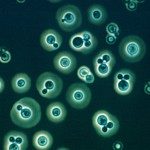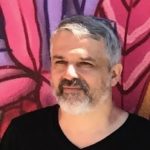Link to Pubmed [PMID] – 24985132
Link to DOI – 10.1101/cshperspect.a019760a019760
Cold Spring Harb Perspect Med 2014 Jul; 4(7): a019760
Cryptococcus neoformans and Cryptococcus gattii are the two etiologic agents of cryptococcosis. They belong to the phylum Basidiomycota and can be readily distinguished from other pathogenic yeasts such as Candida by the presence of a polysaccharide capsule, formation of melanin, and urease activity, which all function as virulence determinants. Infection proceeds via inhalation and subsequent dissemination to the central nervous system to cause meningoencephalitis. The most common risk for cryptococcosis caused by C. neoformans is AIDS, whereas infections caused by C. gattii are more often reported in immunocompetent patients with undefined risk than in the immunocompromised. There have been many chapters, reviews, and books written on C. neoformans. The topics we focus on in this article include species description, pathogenesis, life cycle, capsule, and stress response, which serve to highlight the specializations in virulence that have occurred in this unique encapsulated melanin-forming yeast that causes global deaths estimated at more than 600,000 annually.


